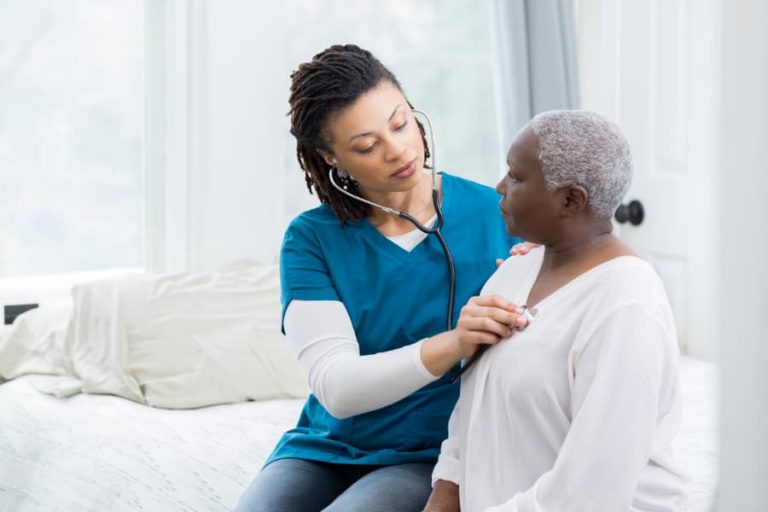Types of Lung Cancer and Care Options in NJ, CT, and MD
There are several considerations involved in formulating a personalized treatment plan for a person with lung cancer. Cancer specialists identify the location of cancerous cells in the lungs, measure the size of tumors and determine whether cancer has spread to other areas of the body. These steps are called staging cancer. However, another important component in developing a treatment plan is identifying the specific type of lung cancer. In New Jersey, Connecticut, Maryland, and the Washington, D.C. area, medical experts at Regional Cancer Care Associates are experienced in both diagnosing lung cancer and developing individualized treatment plans for people with lung cancer.
Types of Lung Cancer Cells

When abnormal cells start to grow and become cancerous growths, such as tumors, they are classified based on their appearance under microscopic observation. In lung cancer, these cells usually are classified into one of two main types:
- Small cell lung cancer (SCLC): An aggressive type of lung cancer that grows quickly, SCLC makes up about 15 percent of all lung cancers. Frequently caused by smoking tobacco, it often spreads to other parts of the body. Treatments for this lung cancer vary but often include chemotherapy.
- Non-small cell lung cancer (NSCLC): Making up about 85 percent of lung cancer cases in the U.S., this form of cancer develops more slowly than SCLC. This form of lung cancer may be associated with smoking, and often is marked by spread to the lymph nodes. There are a variety of treatment options, depending on the specifics of each case. There are three main subtypes of NSCLC:
- Adenocarcinoma: These cancers usually form in the epithelial tissues lining surfaces on the outer areas of the lungs. Adenocarcinomas make up about 40 percent of cases of lung cancer. Adenocarcinoma is found more often in women than men, and people who do not smoke or who are light smokers compared to heavy smokers.
- Squamous cell carcinoma: These cancer cells often are observed in the central regions of the lungs, near the bronchus. Squamous cell carcinomas make up about 30 percent of cases of lung cancer.
- Large cell carcinoma: This least common type of NSCLC is responsible for about 15 percent of cases of lung cancer. Located throughout the lung, it grows more quickly than adenocarcinoma or squamous cell carcinoma.
A less common type of lung cancer also may be identified by examination of cell samples:
- Lung carcinoid or bronchial tumors: Making up less than 5 percent of cases of lung cancer, these tumors grow slowly and rarely spread to other parts of the body. These tumors often are treated with surgery, as well as chemotherapy and radiation therapy.
Lung Cancer Treatment Options
Treatment plans are based on the types of lung cancer found in the patient and other factors. The cancer care team carefully considers the type of carcinoma present, its stage, and factors such as the patient’s age and overall health. At Regional Cancer Care Associates, treatment plan options are always discussed with the patient. We also offer an integrated care approach, which provides supportive therapies for patients as they negotiate any side effects and symptoms during treatment.
- Surgery may be recommended as a first approach, or may be performed after radiation therapy has been administered to shrink a tumor.
- Radiation therapy may be recommended to deliver high-energy beams that kill lung cancer cells.
- Chemotherapy may use a combination of drugs, taken intravenously or orally, over time, to destroy lung cancer cells.
- Immunotherapy helps the body fight lung cancer cells by harnessing the power of the immune system.
- Targeted therapy involves administration of drugs that act against specific mutations that contributed to the development of a person’s lung cancer.
Watch for These Symptoms of Lung Cancer
Early detection is important for prompt initiation of lung cancer treatment, but the signs and symptoms of the disease may be easy to miss. If you note one or more of these symptoms, schedule a visit with a physician:
- Coughing, especially when persistent or worsening
- Shortness of breath, such as wheezing
- Chest pain, which may worsen with deep breathing and coughing
- Bronchitis, especially recurring cases
- Weight loss that is unexplained
- Fatigue, including feeling tired, weak, and listless
- Swelling in the face and neck, or trouble swallowing
While most people with a cough, fatigue, or one of the other symptoms listed above will not have lung cancer, the symptom may indicate the presence of another condition requiring treatment. Rather than wait and worry – and potentially regret the inaction later – have symptoms evaluated promptly so that you can about the peace of mind and/or care you deserve.
Are You at Risk for Developing Lung Cancer?
Along with watching for signs and symptoms of lung cancer, people can protect their health by becoming aware of the risk factors for this disease. While the No. 1 risk factor for developing lung cancer is smoking (which includes smoking marijuana, as well as smoking tobacco), other risk factors also are important to recognize. They include:
- Secondhand smoke
- Diesel exhaust
- Radon
- Asbestos
- Air pollution
- Radiation therapy
Schedule an Examination for Lung Cancer Care in NJ, MD, or CT
For more information about lung cancer treatment options, the doctors at Regional Cancer Care Associates are always available for consultation. Make an appointment today to learn more about the comprehensive, compassionate care RCCA provides to people with lung cancer.
RCCA has 25 clinical centers conveniently located throughout New Jersey, Connecticut, Maryland, and the Washington, D.C., area. Make an appointment at a Regional Cancer Care Associates location near where you work and live today.